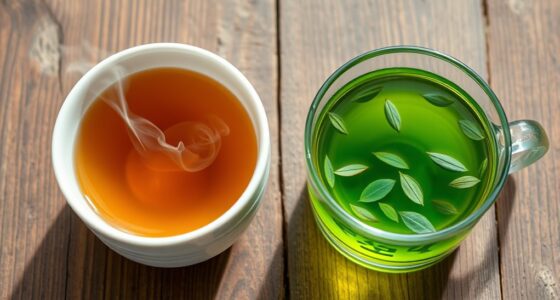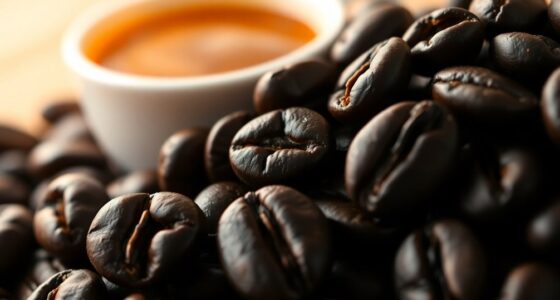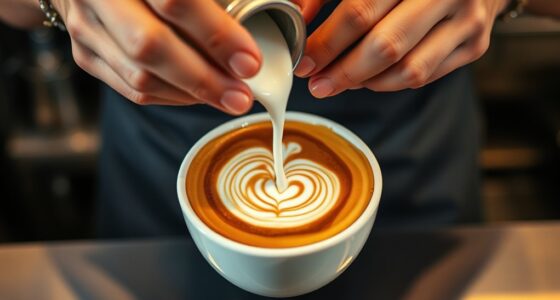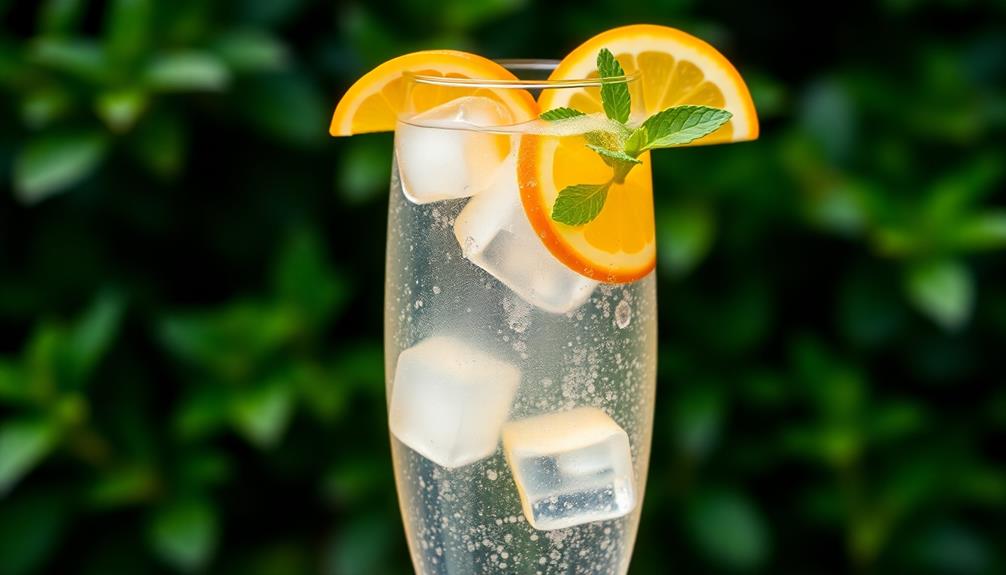To get the best flavor from your tea, pay attention to water temperature. Green and white teas should steep between 150-180°F to avoid bitterness, while black teas need near-boiling water at 200-212°F for full extraction. Oolongs fall in the middle at 185-205°F. Proper temperature controls uncover different aromas and flavors, making your tea more enjoyable. Keep learning to master the perfect brew for every tea type and taste.
Key Takeaways
- Different teas require specific steeping temperatures: green (150-180°F), oolong (185-205°F), black (200-212°F).
- Using the correct temperature prevents over-oxidation or under-extraction, ensuring optimal flavor.
- Pre-warming your teapot helps maintain consistent steeping temperature for better flavor development.
- Avoid boiling water for delicate teas like green and white to prevent bitterness and preserve subtle aromas.
- Adjust steeping times according to tea type, as temperature and duration together influence the final taste.
Understanding the Science Behind Tea Temperatures

Understanding the science behind tea temperatures helps you appreciate how different steeping times and heat levels influence flavor. When you heat tea, the temperature affects tea oxidation, which is the chemical process that transforms fresh leaves into the complex flavors you enjoy. Higher temperatures accelerate oxidation and enhance flavor extraction, releasing more aromatic compounds and tannins. Conversely, lower temperatures slow oxidation, resulting in a lighter, subtler taste. By controlling the heat, you influence how much flavor and aroma are extracted from the leaves. This delicate balance determines whether your tea tastes bold, delicate, or somewhere in between. Grasping this science helps you tailor steeping conditions to achieve the perfect flavor profile for each tea type. Additionally, understanding vetted materials used in teapots and accessories can further refine your brewing process for optimal results.
Optimal Temperature Ranges for Different Types of Tea
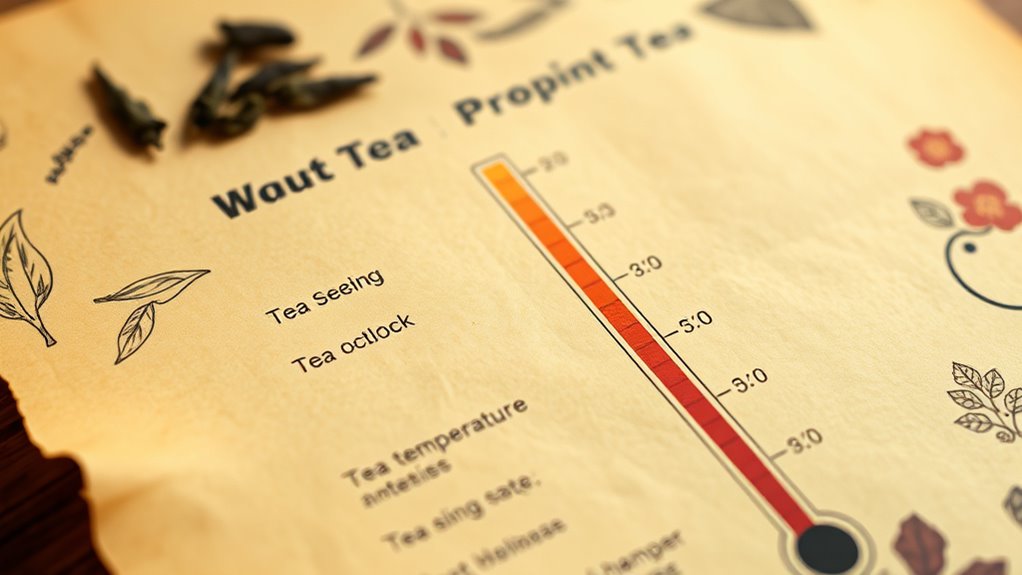
Different types of tea require specific temperature ranges to bring out their best flavors and aromas. For delicate green and white teas, keep water between 150-180°F (65-80°C) to prevent over-oxidation and preserve subtle notes. Oolong teas thrive at 185-205°F (85-96°C), balancing partial oxidation with aroma. Black teas need higher temps, around 200-212°F (93-100°C), to fully extract bold flavors. Herbal infusions often steep best at near boiling, 212°F (100°C). Remember, the tea leaf oxidation level influences ideal temps, while water mineral content can also affect extraction, altering taste. To optimize your brewing, consider these points: temperature control is crucial for highlighting the unique characteristics of each tea type. – Use softer water for delicate teas – Avoid over-boiling water for green teas – Adjust steeping temps based on oxidation levels – Maintain consistent temperature for best flavor extraction
Tips and Techniques for Perfecting Your Tea Brew
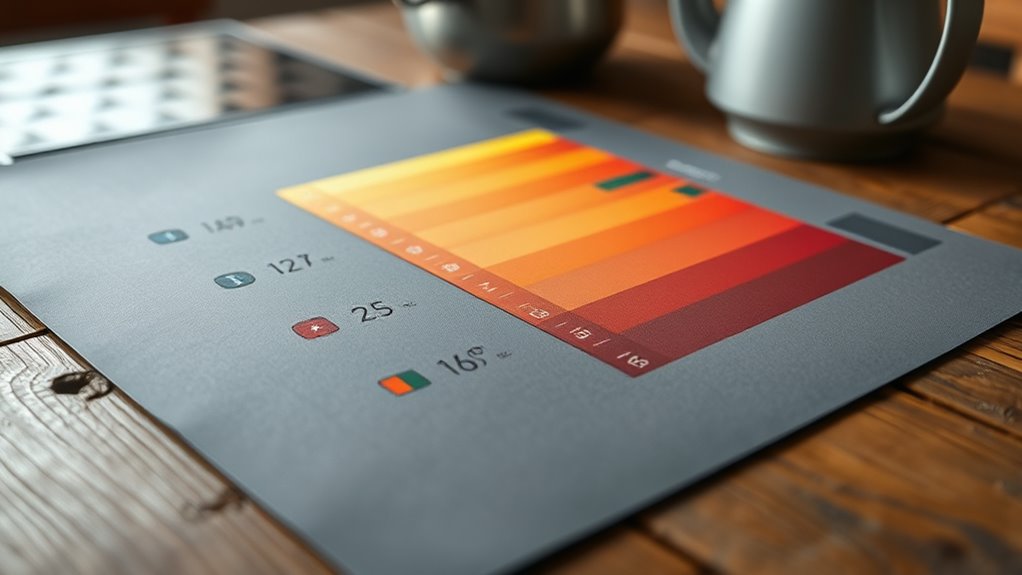
To brew the perfect cup of tea, paying attention to temperature and timing is essential. Proper tea infusion guarantees that the flavors and aromas develop fully without turning bitter or dull. Use the right steeping time for each tea type—shorter for delicate greens, longer for robust blacks—to optimize flavor extraction. Keep your water at the ideal temperature for your tea, as too hot or too cold can hinder infusion quality. Pre-warm your teapot or cup to maintain consistent temperature during brewing. Stir gently if needed to evenly distribute heat. Remove the tea leaves promptly once the desired steeping time is reached to prevent over-extraction, which can cause bitterness. Additionally, understanding the Vetted electric bike conversion kits can inspire you to explore new hobbies during your tea times, like assembling or customizing your own e-bike for leisurely rides. These tips help you achieve a well-balanced, flavorful brew every time.
Frequently Asked Questions
How Does Altitude Affect Optimal Tea Steep Temperatures?
Altitude influences your ideal tea steep temperatures because higher elevations have lower boiling points, making it harder to extract flavors fully. You might need to increase your steeping time or slightly raise the temperature to maintain steeping consistency. By adjusting for altitude, you guarantee your tea’s flavor remains balanced and rich, even in mountainous regions where boiling water isn’t as hot as at sea level.
Can Water Mineral Content Influence Tea Flavor at Different Temperatures?
Water mineralization can dramatically influence your tea’s flavor, almost like a secret ingredient. Higher mineral content can enhance flavor extraction at certain temperatures, making your tea more vibrant, while softer water might produce a gentler taste. Adjusting steep temps based on water mineralization helps you uncover the full potential of your tea, ensuring each cup delivers a perfect balance of flavor and aroma, no matter the mineral content.
Do Different Brewing Vessels Change Ideal Steep Temperature?
Yes, your brewing vessel can change the ideal steep temperature. For example, a metal teapot conducts heat quickly, so you might need to lower the temperature slightly to avoid over-extraction. A ceramic or glass teapot insulates better, allowing for a more stable temperature. Pay attention to your teapot material, as it influences how heat is retained and transferred, ultimately affecting your tea’s flavor and steeping perfection.
How Does Steeping Temperature Impact the Caffeine Content?
In an era when knights carried their swords, you’ll find that steeping temperature directly influences caffeine extraction. Higher temperatures boost steeping efficiency, pulling more caffeine into your brew, while lower temps limit it. So, if you prefer a stronger caffeine kick, aim for hotter steeping temps; for milder effects, cooler water works better. Remember, the right temperature balances flavor and caffeine, giving you control over your tea experience.
Are There Health Benefits Linked to Specific Tea Steep Temperatures?
You’ll find that steeping your tea at ideal temperatures unlocks herbal benefits and boosts antioxidant levels. For delicate herbs, lower temperatures preserve delicate compounds, enhancing health benefits. Higher temps extract more antioxidants from black or green teas, offering immune support. By adjusting your steeping temperature, you can maximize these health benefits, ensuring you get the most out of each cup, whether for relaxation or wellness.
Conclusion
Mastering tea temperatures is like painting a perfect picture—you need the right shades and strokes. Just as a vibrant landscape requires careful blending, your tea’s flavor blossoms at precise temperatures. Too hot, and you risk bitterness; too cold, and you miss the depth. By understanding those subtle differences, you create a cup that’s both a work of art and a comforting hug. So, embrace the science, and let your perfect brew unfold before your eyes.



